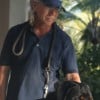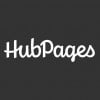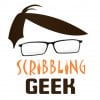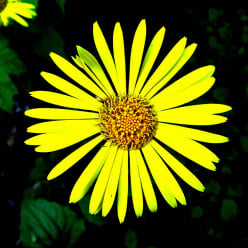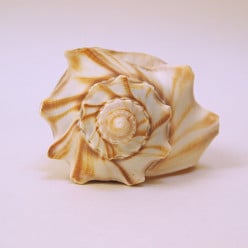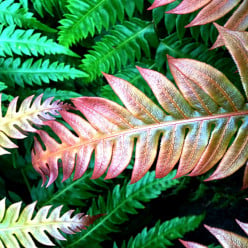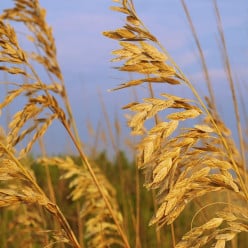Image Best Practices
The last time editors went through PetHelpful, they replaced some of my top images with new images with text on them, apparently to attract more social media shares. That was fine and I thought the editor did a good job.
Now, they are going through and removing those images, replacing them with images with no text. Also fine I guess, but kind of confusing. Seems like maybe they were okay to begin with, no?
In my opinion, the editors are doing a better job than ever, though I am a little annoyed that they didn't give me the option to update my own articles, which they usually do. Could have saved them some work. I'll also let go that they changed a title that was attracting traffic for some reason. Grr.
The point of this is, one of my issues remains, as it was from the beginning, a lack of consistency between editors, and the apparent lack of a consistent SEO and best practices strategy.
It is hard to know how to update our own articles when the editors themselves seem not to agree and make edits to each others' edits.
So, what's the story? Do we want images with text on them to attract social media share, or have we changed our minds on that?Yes, I just saw that on one of my articles that had text attached. The new image has no text and if someone is doing an image search they will not click on it. The new image will also never be saved on Pinterest as it has nothing to do with the subject.
(I am not sure how many people find an article through an image source but traffic is so bad here now that I think that even a few page views a day makes a difference.)I just remember an editor for another niche site making kind of a big deal about adding images with text when I didn't want to change one of my original images, a photograph I took myself.
I agree with you that it probably doesn't mean much for traffic (though the caption/image alt text would matter more for image search). But, apparently, that editor at the time thought it mattered.
That was only like six months ago. What has changed?
Who knows?Not sure. I changed mine back and will chime in later if there is any problems with doing that.
We're currently going through PetHelpful and adding landscape top images to every article in order to increase the amount of text that appears "above the fold" on mobile. As of now, this is only happening on PetHelpful, but we will likely expand to other sites soon.
So rather than have our images changed, should we recrop them to give them a landscape format? Do you recommend a specific aspect ratio? I often make mine square as a compromise.
So, if I understand correctly, this wasn't about the text in the image but about the image ratio.
Not that anything matters anymore, but way back when HP changed to full-width we were advised to choose landscape-ratio images. Many of us (at least me, anyway) have been trying to do that for years. It was the editors that were inserting portrait and square images over the past few editing rounds.
It never made sense to have a tall image on top of the page, Yet, they replaced the images I chose, based on HP's recommendations. Now, they are going back and re-replacing them.
On top of that, like an idiot, I actually paid attention to what the editors were doing and chose taller images for some of my newer articles (not on PetHelpful). Because the editors must know what's best, right? Now, those will all need to be replaced.
Do you see how this can get a little frustrating?
Deleted
Deleted
I noticed the same trend too. I think the original wave of adding new images with text related to Pinterest, which they pushed at one time but don't seem to bother as much with nowadays.
I don't know why they changed them back to non-text in some instances.
Generally speaking, they don't seem all that interested in the images at the moment. The recent editing work has been very much text-orientated.
Pinterest, along with Facebook, still seems to be their favored sites for sharing.
It's the sort of thing that they should definitely inform us about, in my opinion.
We need clarification on this. I appreciate their advice, plus I don't want to put work into something that an editor's just going to replace.
I've been creating completely new images when pinning on Pinterest in recent times. Pinterest's ideal image is 1000 x 1500 pixels rectangle, whereas the HP ideal is more like a 1400 x 1400 square shape.P.S. I just had a look in the Learning Center for guidance on this matter but couldn't find anything!
Pinterest still prefers portrait-style images, but including that type of image at the top of an article pushes the text completely below the fold on mobile. We highly recommend retaining Pinterest-style images in your articles but placing them further down the page so that readers get to the text (and the answer to their question!) more quickly.
Thanks for this advice, which I definitely use.
While that clears up the shape/size issue for me, I'm still confused as to how much we should be focused on using image-only vs. image-and-text?
Are you saying image-only for the first image but image-and-text for the Pinterest-friendly later image(s)?
I feel like HP could dedicate an entire page to how to use Pinterest in the Learning Center(!)
Pinterest also seems very specific in the subject matter it likes. A lot of stuff on Dengarden and Delishably, for instance, seems to be very much in Pinterest's ballpark but there are other areas and info/articles that seem to get more or less ignored by P.Paul, I like and welcome your suggestion. I endorsed and second the same. Hubpages, please, educated us on the 'best practise' of using Pinterest pins on hubpages. Much thanks.
An editor told me last year, or was it the year before, that they're thinking of doing away with text on images because of the cropping issue and text disappearing on the multitude of different types of viewscreens.
Hmm, that would make sense!
As far as Pinterest goes, I generally think that it's best to create pins from scratch, anyway, get both the right image design and write a 500-character description that's SEO-friendly and inviting.Saving pins using pin buttons, rather than creating them from scratch doesn't seem to allow any descriptive text and hashtags to be added later. Maybe there's a way around this?
That's one of the problems and why I stopped the pin button method.
You can change anything apart from the image when you create it from scratch.
I don't know any way around the issue you describe.
I've tracked down the email regarding this from last September. There was some toing and froing about a title image that was low resolution and needed to be replaced and that's how the subject came up.
"We may soon begin moving away from text overlay in top images, as the overlay often gets cut off depending on where you're viewing the thumbnail, but we haven't decided 100% yet"
Personally I don't mind text being semi-cropped as long as some of it is visible and it gives the gist of an article. Searchers can click on an image if they want to see the text or the image in an article proper. Google sometimes crop images unnecessarily, just to suit themselves when they want to fit images in grids in image searches. The only safe place to put text is bang in the middle, vertically, but that obscures the image and even then, text can still get chopped off on both sides, if the image is made narrower to be squashed in amongst others.That's fine, and I'm really okay with whatever they want. The thing is, when their approach changes, they need to let us know somehow. Otherwise, we are going on the advice they no longer view as valid, and they are just going to change what we've done the next time they go over our articles.
I agree.They need to tell us. Otherwise, we can end up wasting time. Messing around with images can be laborious sometimes.
After reading through this thread and thinking about it, I don't really see a real difference between portrait and landscape cover photos. If someone is going to read the article, a simple scroll down isn't going to stop them.
My guess is that it's more of a "the quicker they can get to the text, the quicker they can get to the ads."
As long as the photos look good, I really don't care. I have had edits before where a photo was changed out to something that looked awful, and then I replaced it with something that I thought was more aesthetically pleasing. This has happened maybe like two or three times, so not a big deal at all.I don't find the advice about image shapes controversial. The reader has to be moved along quickly when they first arrive on the page or they tend to click away.
My confusion was really about whether to add text or not.Content above the fold has always been correlated with a better user experience. Whether or not it helps with rankings in itself is less clear. Images are content, so in that sense, I agree with you, but it really depends on what those images are and how much value they have for the reader.
IMO, in most cases, as Paul said below, moving the reader along to the meat of the article is a useful tactic in keeping them engaged.
However, when three ads appear in the first 400 words of text, it kind of defeats the purpose. So, I think you may the right about that.
I bet some people remember when the HP layout featured a right-justified ad at the top of the page. A common strategy was to place an image in that spot, forcing the ad lower on the page and below the fold. Did it help? People thought so. I did it. Who knows.The way I see it, there's always a gap between how humans see things and how Google calculates. While the algo is complex, the info that Google relies upon is relatively crude.
People have a tendency to conflate the human and machine thinking. Google encourages this with its B.S. pronouncements.
For instance, actual human "engagement" is a multi-faceted thing that depends on things like emotions, conscious thought, etc. Google tends to measure "engagement" with crude, cold figures and calculations like "bounce rates".
You, as a user, might stay on a page for thirty seconds because you like the info, or because you're stunned by how terrible it is, Google will still just see it in calculatory terms. It has no idea what your emotions are or what you're thinking.
That's one reason why statistical information on how users actually interact with pages is far more useful than people trying to guess what's happening. It provides better insights into how Google might see things.
Things like the page structure and ad placement have to take into account the analytics.
The way all this is supposed to work, as I see it, is that HP do the number-crunching and analysis and pass on to us what's best practice.
It's not just about access to the calculatory stats. HP also have access to vast amounts of empirical info on what works and what doesn't that we, as hubbers, simply don't.
I wade in late but notice how interestingly and enlightening the thread and conversation has gotten far. Pinterest is something I've not properly understand well other than to pin articles though I'm registered. Hubpages on their giving end should share these odd changes in their weekly news letter.
The upating of the Learning Center, and other informational platform is much over due. And the upate is much expected. Hope that is done. Thanks.
Related Discussions
- 44
How to be successful without being a prolific hubber - Best practices?
by Laura 12 years ago
Hello,I'm new to Hub. First a compliment. After coming off another content site, and researching others for a long, long time, it's a Godsend to come to a place that demands lengthy, quality work. I value quality articles over quantity, but here's my kicker.I want some money. I know it takes...
- 69
My article is no longer my writing!
by Nell Rose 6 years ago
I am pretty insulted. Sorry, but it had to be said. I had written an article on here that had done really well. In fact, it was one of my top earners. I went to answer a comment on it, and I stared at it for at least five minutes. I no longer recognised it! The photos had been changed, the writing...
- 33
Changing what an editor did on an article
by Nathan Bernardo 5 years ago
How do you deal with a change that was made to an article by an HP editor? They unnecessarily changed the title of the article, I'd like to change it back to what it was. Is that what everyone else does when this kind of thing happens? Curious.
- 41
Suspicious of Some Editors
by Dora Weithers 19 months ago
Just expressing my concern about the editors. How can we make sure that they are contributing to our morale and our improvement?I wrote an article about my grandchildren and me. I used ONLY ORIGINAL PICTURES of my grandchildren and me, which the editor thought was good enough to keep. Yet, he/she...
- 57
Owlcation edits
by Rupert Taylor 3 years ago
In case you haven't noticed, there's a massive edit of Owlcation articles going on. For the most part, I can only quibble about changes made, although a few irritating issues have cropped up. I suggest checking the editing because some errors are finding their way into articles.One or two of my...
- 11
Getting real sick of these "editors"
by Mel Flagg COA, CPT, CHC, CNC 2 years ago
While I'm happy my latest article was moved to a network site, these editors...I received an email that stated my article was edited, and one of the things listed was they changed the lead photo to one that had no text overlay.However, they actually did the opposite. See below:Clearly, that image...

